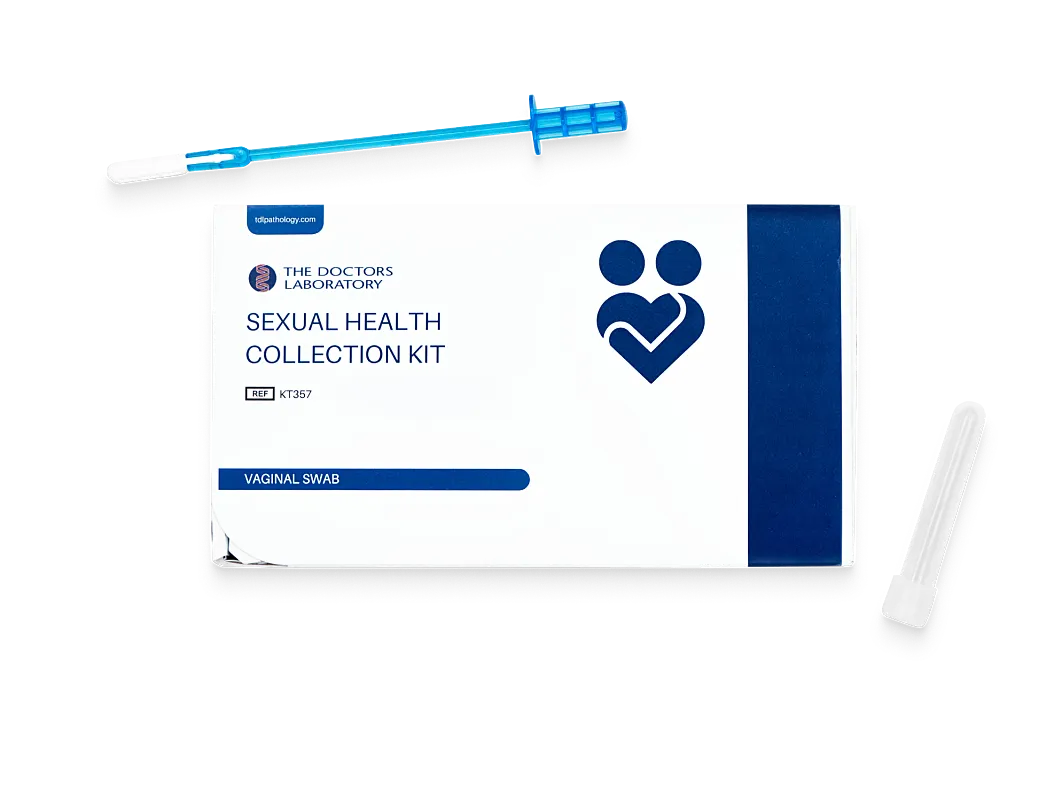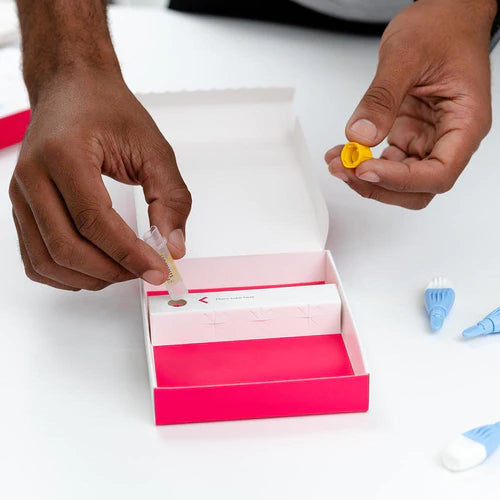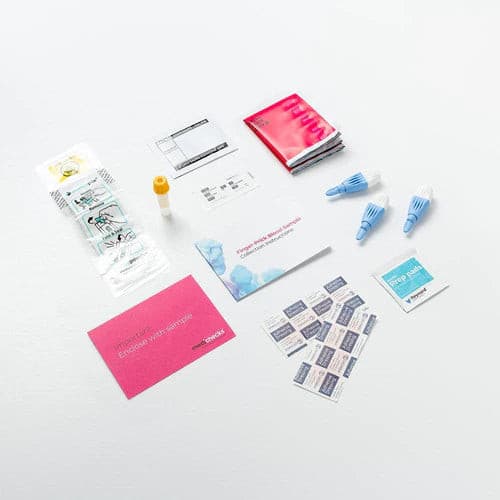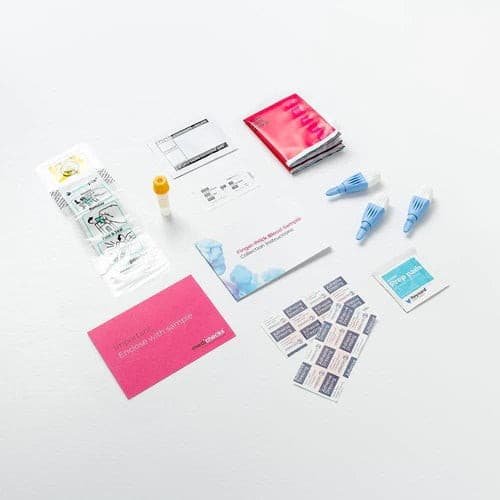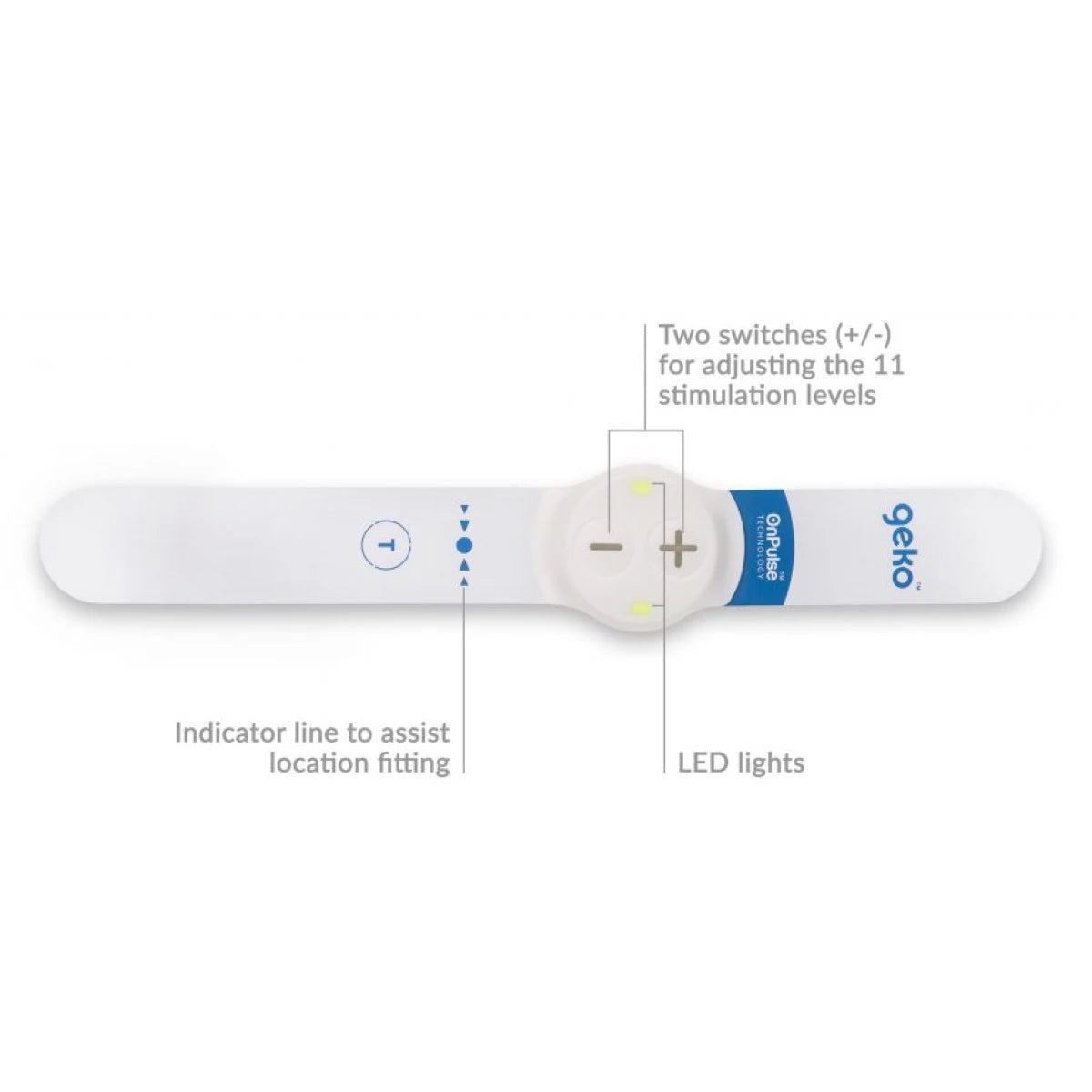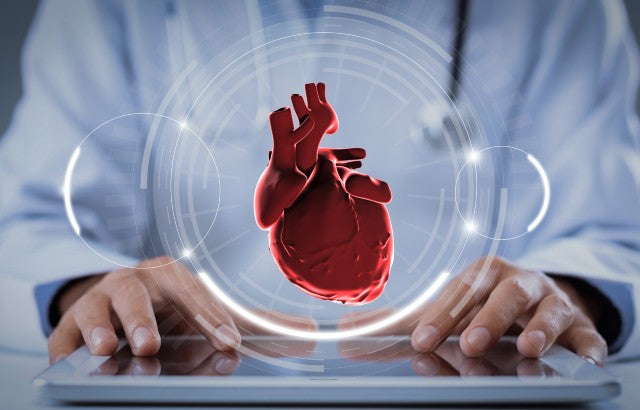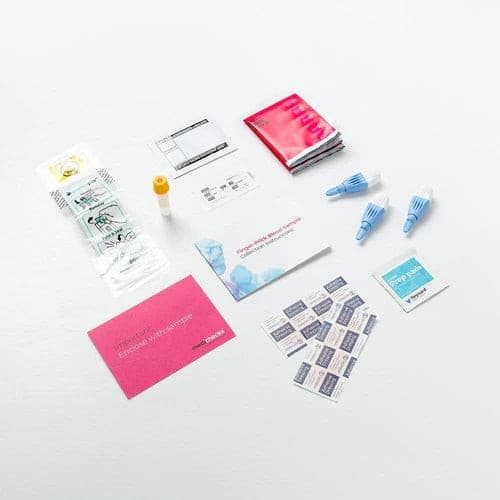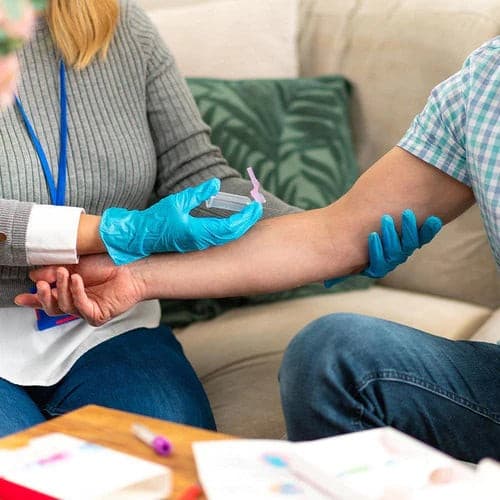Why People Choose Us

Quick & Easy
No appointment or long waiting times

Discreet Packaging
Plain packaging with no medical stamps or marks

Confidential Service
Your information stays with us and private payment

UK Medication
Dispensed by registered UK pharmacists
Proteins (3 Biomarker)
Proteins are essential for muscle growth as well as the operation of cells and tissues. Blood proteins are measured to assist in the diagnosis of various illnesses, such as liver or kidney disease.
It is common practise to analyse proteins to determine how much of a specific hormone is bound to a protein or free and thus available to your cells. Proteins also transport other chemicals, such as hormones, throughout the blood.
Dehydration is a common cause of elevated proteins, but they can also be a sign of other health issues. A significant protein deficiency may be a sign of malnutrition or malabsorption.
Total Protein
The total protein in your blood is the sum of the proteins albumin and globulin. Among their many jobs, albumin and globulin keep blood in vessels, deliver nutrients, and combat infection. A liver or renal problem as well as malnutrition may be indicated by abnormal levels.
Albumin
A protein called albumin is mostly produced in the liver. It aids in generating the osmotic pressure necessary to keep water in the blood.
It is crucial for tissue growth and healing and aids in the transportation of nutrients, medications, and other substances through the blood. By measuring albumin levels in the blood, we can determine how much hormone is available to your tissues.
Albumin also transports hormones throughout the body.
Globulin
The term "globulin" refers to a variety of proteins that the liver and immune system create. While certain globulins transport metals like iron in the blood, others bind with haemoglobin.
In addition, there is a specific class of globulin called an immunoglobulin, which is another name for an antibody and aids in the body's defence against infection.
Diabetes (1 Biomarker)
Type 2 diabetes is a metabolic condition that affects people of all ages more frequently. In the UK, up to one-third of persons are at risk of developing diabetes due to prediabetes. It is brought about by the interaction of our genes and our way of life.
Being overweight, eating poorly, and not exercising all increase the risk of having diabetes. Early detection of diabetes is crucial because, even if your blood sugar has risen and you are at the prediabetic stage, you can still lower it by changing your lifestyle.
Once you have been diagnosed with diabetes, it is crucial to carefully control your blood glucose levels in order to prevent many of the serious complications that can harm your nerves, blood vessels, kidneys, and eyes.
Diabetes is a key contributor to shortened life expectancy and is a known risk factor for cancer, cardiovascular disease, and other illnesses.
HbA1c
Glycated haemoglobin, commonly known as haemoglobin A1c (HbA1c), is a longer-term indicator of blood glucose levels than a straightforward blood glucose test.
Your red blood cells' ability to attach glucose to haemoglobin plus the fact that these cells have an average lifespan of 12 to 16 weeks give us a decent idea of the typical quantity of sugar in your blood over the course of three months.
Inflammation (1 Biomarker)
When your immune system is triggered to purge your body of external invaders or irritants and to guard against tissue damage, inflammation results.
Inflammation frequently manifests as heat, redness, swelling, and discomfort. An acute or persistent inflammation might exist. Infection or injury are common causes of acute inflammation, which appears for a few days before going away.
Long-term diseases including arthritis, inflammatory bowel disease, or asthma can lead to chronic inflammation. Certain proteins that are elevated in the blood as a result of inflammation can be tested to determine the level of inflammation and, in some cases, its underlying cause.
CRP-HS
The C-Reactive Protein (CRP) is a marker of inflammation that is used to determine whether there is inflammation in the body but not where it is situated.
A test known as High Sensitivity CRP (CRP-hs) is used to find low-level inflammation that may harm blood vessels and cause a heart attack or stroke. There is a great deal of inflammation at the site of a significant injury. The swelling around a twisted ankle is easy to picture. Your CRP-hs will increase with any damage of this nature.
But frequent exercisers also run the danger of developing chronic low-level inflammation, which can harm their performance.
We draw this picture using CRP-hs, CK, and your complete blood count (see the articles on the liver and complete blood count). When you are rested for the test, inflammatory markers like CRP-hs provide the most insight; otherwise, they may be increased from recent exercise.
Red Blood Cells (7 Biomarkers)
The most prevalent form of blood cell, the red blood cell, is responsible for transporting oxygen to your tissues through your circulatory system.
Your bone marrow continuously produces red blood cells to replace those that are lost as a result of bleeding or cell ageing.
Your red cell count should remain consistent, but some health issues can result in abnormally few or excessively numerous red cells, abnormally fast cell death, or abnormally shaped red cells.
The amount of oxygen given to your tissues is affected if you are not creating enough red blood cells, which causes anaemia and its accompanying symptoms of weariness and pale skin. Headaches, blurred vision, and an enlarged spleen can all be symptoms of excessive red blood cell production.
Haematocrit
The haematocrit (HCT) scale measures how much space (volume) red blood cells occupy inside the blood.
Haemoglobin
Red blood cells contain the protein haemoglobin, which is responsible for the red colour of the blood and for carrying oxygen throughout the body.
This test gauges the blood's capacity to transport oxygen throughout the body by counting the amount of haemoglobin present.
Because they need to make sure that their muscles are getting enough oxygen, athletes and sports persons typically have higher oxygen demands than the normal person. In endurance and strength athletes, it is typical to detect haemoglobin levels at the higher end of the normal range.
MCH
The average amount of haemoglobin found in one of your red blood cells is measured by MCH (mean corpuscular hemoglobin).
MCHC
The average amount of haemoglobin in your red blood cells is called the MCHC (mean corpuscular haemoglobin concentration). Red blood cells use the chemical haemoglobin to carry oxygen throughout the body.
MCV
Your red blood cells' average size can be determined by your MCV (mean corpuscular volume).
This is crucial to evaluate because it can show how much oxygen your cells are probably transferring throughout the body.
Red Cell Count
Analyzing the quantity of red blood cells in the blood is known as red blood cell (RBC) counting.
Oxygen is transported by red blood cells from the lungs to the rest of the body, where it can be used as a source of energy for activities like breathing and moving about. Additionally, they transport the carbon dioxide that cells make back to the lungs for exhalation.
RDW
The red blood cell distribution width (RDW) reveals whether the sizes and shapes of your red blood cells are uniform across the board or vary.
Your red blood cells may grow in atypical sizes due to several blood disorders because, in general, cells are pretty uniform in size and shape. The size difference between the largest and the smallest red blood cell is determined by this test.
Clotting Status (2 Biomarkers)
Your bone marrow produces your clotting cells (platelets), which are crucial for regulating bleeding.
Thrombocytopenia is a condition that occurs when too few or too quickly damaged platelets are created. Immune problems, certain medications, liver illness, or continuous bleeding are all potential causes of this.
Thrombocytosis, often known as a high platelet count, can result from a number of illnesses, including problems with the bone marrow, infection, and inflammation.
Platelet Count
The smallest form of blood cell, called platelets or clotting cells, are crucial for blood coagulation.
The platelets enlarge, cluster, and eventually form a sticky plug (a clot) that aids in stopping bleeding when it occurs.
MPV
Mean Platelet Volume, or MPV, is a measurement of your platelets' typical size.
Blood cells that have been broken up into pieces are called platelets, and they help clots form. The production of platelets in your bone marrow is indicated by MPV.
White Blood Cells (6 Biomarkers)
The foundation of your body's immunological or defence system is made up of white blood cells.
They combat illnesses and shield your body from external substances like dangerous bacteria and germs. White blood cells are created from bone marrow stem cells and have a short lifespan of a few days.
The body is protected by five main types of white blood cells, each of which has a unique function. Your immune system and recent infections can both be diagnosed using the numbers of each of these categories of white blood cells.
White Cell Count
The White Blood Cell (WBC) Count calculates how many white blood cells are present in the blood. White blood cells are essential to the immune system of your body.
They combat illnesses and defend your body from invaders like dangerous bacteria and germs. To shield you from repeated infections with the same germ, they also develop a large number of antibodies and memory cells.
Basophils
White blood cells called basophils guard your body against bacteria and parasites like ticks. They additionally contribute to allergic responses.
Eosinophils
White blood cells called eosinophils are in charge of eliminating parasite infections and controlling inflammation to identify an infected spot. They also have an impact on asthma and allergies.
Lymphocytes
White blood cells called lymphocytes defend the body against viral and bacterial illnesses.
They are a subgroup of white blood cells that play a role in the body's more focused response to infections, which is able to recognise and classify various foreign organisms that enter the body.
They create antibodies and memory cells to aid in preventing further infections from the same germ in addition to combating infection. T cells, B cells, and natural killer cells are examples of lymphocytes.
Monocytes
White blood cells called monocytes engulf and eliminate pathogens as well as dead or damaged cells from our blood.
These cells' activity contribute to the heat and swell of inflammation.
Neutrophils
White blood cells known as neutrophils are in charge of assisting your body in the fight against illness. If your neutrophil count is low, you may be more susceptible to disease and infection.
Iron Status (4 Biomarkers)
Ferritin
A complex globular protein called ferritin is used to store iron in an inactive form. The ferritin releases its iron for usage as your iron reserves get depleted.
You will run out of iron if your ferritin levels drop, and your ability to make red blood cells in your bone marrow will also suffer.
Thus, ferritin provides a reliable indication of your iron reserves. Ferritin can rise at times of infection, inflammation, or trauma because it is an acute phase protein as well.
Iron
Iron is essential for the activities that are essential for life, let alone athletic performance, such as oxygen transport, DNA synthesis, and oxidative phosphorylation.
Red blood cells include the oxygen-transporting haemoglobin, which contains roughly 2.1g, or about half of the body's total iron content.
A further gramme or so can be found in the oxygen-transporting myoglobin of muscles and in macrophages, which are white blood cells.
The liver is where extra iron is kept. You won't be able to breathe as efficiently at the cellular level if you have low iron levels, which will make you feel more exhausted and tyre more quickly.
This will affect athletes' performance, VO2 Max, energy efficiency, ability to train at their maximum capacity every day, maximum lactate level, and rate of exhaustion. Approximately 5% of your iron comes from food, and the remaining 95% comes from the breakdown and turnover of your red blood cells.
The two main forms of iron in your diet are Fe2+, which is present in meat and dairy products, and Fe3+, which is more difficult to absorb and is present in plant-based foods.
Tests for iron status examine a variety of iron levels, which when combined can provide information about your iron metabolism and its implications for you.
TIBC
The total iron-binding capacity (TIBC) of your body is a gauge of how well it transports iron through the blood.
Transferrin Saturation
The primary blood protein that binds to iron and carries it throughout the body is called transferrin, which is produced in the liver.
This examination gauges the degree to which iron has "saturated" this protein.
Liver Health (4 Biomarkers)
One of your body's most vital organs, the liver performs a variety of tasks including converting food into energy, eliminating waste and toxins, and producing and regulating some hormones.
Through overeating, drinking alcohol, and contracting viral hepatitis, your liver can become inflamed and gradually harmed. Although your liver has extraordinary regeneration capabilities, liver disease is irreversible once inflammation has resulted in scarring (cirrhosis).
Blood tests evaluate the levels of several enzymes, and if they are elevated, it may be a sign that your liver is inflamed.
Bilirubin
Haemoglobin from red blood cells breaks down, producing bilirubin as a byproduct. Through the liver, the gallbladder stores and concentrates it before secreting it into the intestine. Your body eliminates it through faeces and urine.
Due to red blood cells disintegrating beneath the skin, bilirubin is what gives bruises their occasionally yellow colour.
ALT
The liver produces the enzyme alanine transferase (ALT), which can indicate liver damage brought on by drugs, alcohol, or viruses.
GGT
The liver enzyme gamma GT, sometimes referred to as gamma-glutamyl transferase (GGT), is increased in conditions affecting the liver and bile ducts.
To differentiate between liver and bone diseases, it is utilised in conjunction with ALP. As it is elevated in 75% of heavy drinkers, gamma GT is also used to diagnose alcohol consumption.
ALP
An enzyme called alkaline phosphatase (ALP) is mostly present in the liver and bones. Its measurement can reveal whether a person has any active liver, gallbladder, or bone conditions.
Cholesterol Status (6 Biomarkers)
A fatty molecule called cholesterol is present in the blood and is crucial for the proper functioning of the body's cells.
But having too much cholesterol in your blood can seriously harm your health since it makes you more likely to experience a heart attack or stroke.
Numerous variables increase the risk of cardiovascular disease, and we continue to learn more about the intricate biochemical mechanisms that trigger a heart attack.
However, even then, it is not so straightforward because there are various forms of cholesterol, some of which are more dangerous than others. High levels of cholesterol have long been recognised to increase your risk.
In addition to coming from the food we eat, cholesterol is also produced in the liver. Diet, family history, obesity, and inactivity all have a negative effect on cholesterol levels.
Total Cholesterol
In the organism, cholesterol is a necessary fat (lipid). Even though it has a terrible reputation, it performs a number of crucial tasks, such as creating cell membranes and a number of necessary hormones. In addition to coming from the food we eat, cholesterol is also produced in the liver.
The amount of both good (HDL) and bad (total) cholesterol in your blood is measured (LDL, VLDL and non HDL).When carbohydrate energy sources are scarce or for endurance activities, fats serve as the main energy source.
Medium-chain fatty acids in particular are used extensively. By examining the levels of the various forms of cholesterol, we can gain information into your health and cardiovascular risk.
Cholesterol distributes fatty acids throughout the body (i.e. the buildup of cholesterol in blood vessels leading to blood vessel narrowing, heart attack and stroke).The liver controls the amount of cholesterol in the body; it produces and eliminates it, and it also produces different lipoproteins that carry cholesterol throughout the body. It is these that the cholesterol test measures.
LDL Cholesterol
Low density lipoprotein, often known as LDL cholesterol, is a lipid and protein molecule that carries triglycerides, cholesterol, and other fats to various bodily regions.
When fatty deposits build up inside artery walls due to an excess of LDL cholesterol, sometimes known as "bad cholesterol," this could result in atherosclerosis and heart disease.Through food and exercise,
your cholesterol levels can be dramatically reduced. Likewise, if you can raise your levels, you may be able to avoid developing significant, potentially fatal illnesses in the future. Results for HDL and LDL (and non-HDL) can be used as benchmarks and improvement targets.
Regular exercise, especially cardio and weight training, will help lower LDL and raise HDL. Cholesterol levels will also be optimised by a Mediterranean diet that is heavy in vegetables and oily fish and low in meat and dairy.
Non-HDL Cholesterol
All of the cholesterol molecules that are not HDL (or "good" cholesterol") are referred to as non-HDL cholesterol.
Therefore, it includes all of the potentially dangerous and non-protective cholesterol in your blood. As a result, it is thought to be a more accurate indicator of cardiovascular risk than LDL cholesterol and total cholesterol. Less than 4 mmol/L of non-HDL cholesterol is advised.
Through food and exercise, your cholesterol levels can be dramatically reduced. Likewise, if you can raise your levels, you may be able to avoid developing significant, potentially fatal illnesses in the future.Results for HDL and LDL (and non-HDL) can be used as benchmarks and improvement targets. Regular exercise, especially cardio and weight training, will help lower LDL and raise HDL.
Cholesterol levels will also be optimised by a Mediterranean diet that is heavy in vegetables and oily fish and low in meat and dairy.
HDL Cholesterol
High Density Lipoprotein, often known as HDL cholesterol, is a molecule that transfers cholesterol from the bloodstream to the liver, where it is broken down and expelled from the body as bile.
The term "good cholesterol" refers to HDL cholesterol. Through food and exercise, your cholesterol levels can be dramatically reduced. Likewise, if you can raise your levels, you may be able to avoid developing significant, potentially fatal illnesses in the future.Results for HDL and LDL (and non-HDL) can be used as benchmarks and improvement targets.
Regular exercise, especially cardio and weight training, will help lower LDL and raise HDL. Cholesterol levels will also be optimised by a Mediterranean diet that is heavy in vegetables and oily fish and low in meat and dairy.
Total Cholesterol/HDL
By dividing your total cholesterol value by your HDL cholesterol level, you can get your cholesterol/HDL ratio.
It serves as a gauge of cardiovascular risk since it provides useful information about the percentage of "good" cholesterol in your total cholesterol (i.e. high-density lipoprotein, HDL).
The cholesterol/HDL ratio is used by heart disease risk calculators (like QRisk) to estimate your risk of suffering a heart attack.
Triglycerides
Triglycerides are a type of lipid that move through the bloodstream. They are transported in the bloodstream by chylomicrons and VLDLs, two types of lipoproteins (very low density lipoproteins).
Following a meal, extra calories are converted by your body into triglycerides, which are subsequently carried to cells where they are stored as fat. Triglycerides are then released by your body when it needs energy.
Easy Steps for your Medicine

Complete a consultation.
With complete privacy and confidentiality your form is checked by a pharmacist independent prescriber.
Choose your treatment.
From the list approved by the prescriber, choose your preferred treatment and then wait for it to be dispensed by UK Meds online pharmacy.
Receive your delivery
With next day delivery options available, you can have your treatment sent out to you discreetly within hours.Our Happy Customers
Rated Us for our Service Excellence
 Dispensed by Regulated UK Pharmacists
Dispensed by Regulated UK Pharmacists

 How it works
How it works Help
Help Account
Account
 Basket
Basket










